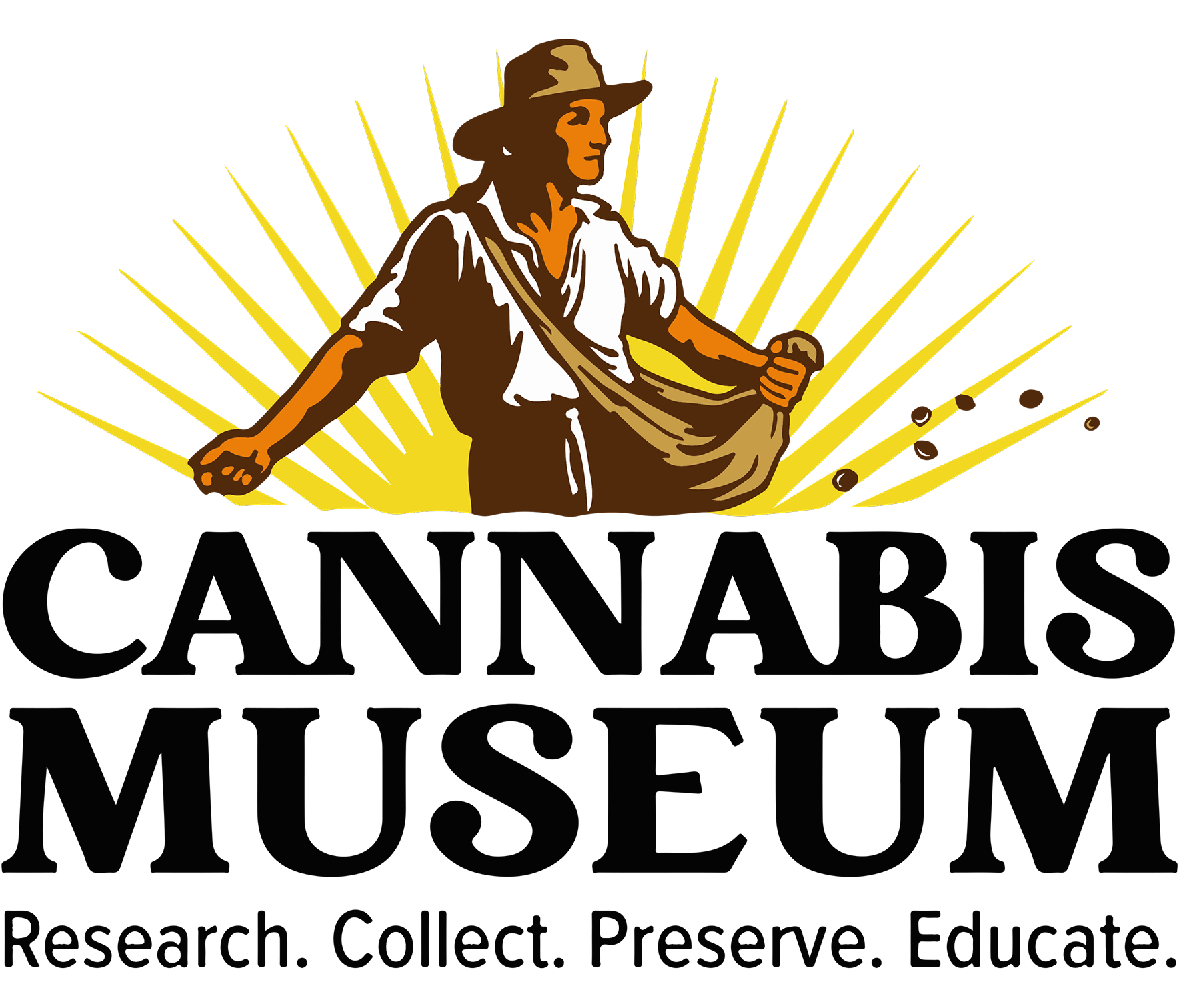Hemp Seed Specie Jar
 For tens of thousands of years, hemp seed has been in continuous use in the form of a protein, oil and a mineral rich food source. The seeds were also used medicinally for a range of prescriptions, laxatives, corn plasters and dyes.
For tens of thousands of years, hemp seed has been in continuous use in the form of a protein, oil and a mineral rich food source. The seeds were also used medicinally for a range of prescriptions, laxatives, corn plasters and dyes.
Dried herbs were our earliest medications. The word “drug” derives from the Dutch word meaning “dried,” as does the word “drought.” Species, or teas, were the terms used for the semi-processed mixtures, either powdered or chopped, of crude drugs that were prepared for a wide range of infusions, teas and tinctures.
The wide-mouth containers, which were in use for over two centuries, were known as species jars. This American made jar is representative of the strong glass produced on the East Coast of the U.S. in the mid-1700s to the mid-1800s. The green cast color is from the iron oxide present in the sand used to make the glass. Green glass was the least expensive and most widely used glass for centuries.
The Romans made small green glass medicine vials that date to at least 200 BCE. Older formulations generally used less purified sources of sand with higher iron content than modern glassmaking sands, which is one of the reasons most ancient glass is green.
 This specie jar was mouth blown into a one-piece mold, designed to accept a friction-fitting metal lid, usually of japanned or varnished tin. Glass and copper were also used. The two-piece soldered lid is intended more to keep vermin out than to keep freshness in. This design for a specie jar was popular for more than a century. At 4½” tall, this is one of the smallest made. Generally, the sizes ranged up to 12″ or more.
This specie jar was mouth blown into a one-piece mold, designed to accept a friction-fitting metal lid, usually of japanned or varnished tin. Glass and copper were also used. The two-piece soldered lid is intended more to keep vermin out than to keep freshness in. This design for a specie jar was popular for more than a century. At 4½” tall, this is one of the smallest made. Generally, the sizes ranged up to 12″ or more.
In the eighteenth century, glass objects were hand-made and precious. Small jars like this sat on display on the counter so customers could see the quality of any product before purchase. Orders would be filled from a container behind the counter, usually not from the display jar.
The label, a simple gold leaf banner with a red, painted underline, is an elegant script finely painted with asphaltum, a durable paint made of petroleum tar and a thinning agent. The irregular bottom of the bottle has a jagged pontil scar, a mark left when the glass-tipped solid metal bar, attached to the bottom of the bottle, is broken free of the bottle during the glassmaking process.
